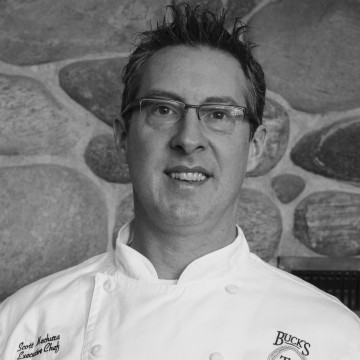Uncategorized
You think you’re pretty smart, don’t you?
Published
5 years agoon
Posted By
Outlaw Partners



By Scott Mechura EBS FOOD COLUMNIST
We try and we try.
We learn butter will cause heart disease and high cholesterol, so we invent margarine. Only to learn decades later that it is far worse for us than good old-fashioned butter after all.
All alcohol is bad for you, but it turns out, red wine has many antioxidants, as well as something called resveratrol, which is beneficial to our hearts.
And as late as the 1980s, pasta was considered a “health food.”
My point being that it’s hard enough to keep up with the lazy susan that is our FDA and big food—telling us what’s good for us and what is now bad. But in addition, many manufacturers, and that’s exactly what they are, use sometimes nefarious practices to mask ingredients, enhance the perceived quality, or alter the flavor of many of the foods we eat on a daily basis.
Here are some tips and things to look for when you shop.
Parmesan cheese. Next time you see “100 percent real” parmesan, don’t be so sure. The FDA has been cracking down in recent years on fillers such as cellulose, inferior cheddar cheese, and even wood pulp. Hey, at least you’re getting fiber.
I wrote a while back about saffron and what an amazing and mysterious spice it is. And expensive. With its high cost comes fraud. Saffron can be adulterated with turmeric, red pepper and even dyed onions.
Honey, pure honey. Nature’s perfect food. Kept protected from the elements and oxygen, honey has been found sealed in clay pots that are over 5000 years old. Once unsealed, it was as pure and flowing as day one. But, never to leave well enough alone, honey has more impurities added to mention here, with China being the most egregious culprit.
Scallops are one of my favorite mollusks, not to mention seafood altogether. But scallops are not immune from corruption. Sometimes what you think are scallops can be anything from stingray wings to shark fins, usually Mako. Many “connoisseurs” believe they can instantly tell a scallop from a stingray fin. But I’ve also heard of chefs who could not tell the difference.
Rice. Thousands of species across the globe. Seems like it should be simple. But place your rice in a dry pan and apply some heat to it. Real rice will start to slowly toast and turn brown. If the grains turn black and don’t smoke, then they are in fact not rice, but plastic. Yep, plastic.
And here are some quickies.
Some yams in the grocery store are died orange on the skins to extend visual life for the consumer.
Ice cream with additives will “melt,” or dissolve, when drizzled with acid from something like lemon juice.
If milk contains a dilutant, such as rice water, most green plants stirred into it will turn it blue.
Well, they say turnabout is fair play. And so you don’t feel completely deflated, here’s a little tip I would like to pay forward.
The next time you are in need of maple syrup in a recipe, make a little simple syrup and add ground fenugreek to it.
Fenugreek is an annual plant from the Middle East, and, by hook and crook, has a flavor almost identical to maple.
Scott Mechura has spent a life in the hospitality industry. He is a former certified beer judge and currently the Executive Chef at Buck’s T-4 Lodge in Big Sky.
The Outlaw Partners is a creative marketing, media and events company based in Big Sky, Montana.


Upcoming Events
april, 2024
Event Type :
All
All
Arts
Education
Music
Other
Sports
Event Details
Saturday, March 23rd 6:00-8:00pm We will combine the heart-opening powers of cacao with the transcendental powers of breathwork and sound. Together, these practices will give us the opportunity for a deep
more
Event Details
Saturday, March 23rd 6:00-8:00pm
Time
March 23 (Saturday) 6:00 pm - April 23 (Tuesday) 8:00 pm
Location
Santosha Wellness Center
169 Snowy Mountain Circle
Event Details
We all are familiar with using a limited palette, but do you use one? Do you know how to use a
more
Event Details
We all are familiar with using a limited palette, but do you use one? Do you know how to use a limited palette to create different color combinations? Are you tired of carrying around 15-20 different tubes when you paint plein air? Have you ever wanted to create a certain “mood” in a painting but failed? Do you create a lot of mud? Do you struggle to achieve color harmony? All these problems are addressed in John’s workbook in clear and concise language!
Based on the bestselling “Limited Palatte, Unlimited Color” workbook written by John Pototschnik, the workshop is run by Maggie Shane and Annie McCoy, accomplished landscape (acrylic) and plein air (oil) artists,exhibitors at the Big Sky Artists’ Studio & Gallery and members of the Big Sky Artists Collective.
Each student will receive a copy of “Limited Palette, Unlimited Color” to keep and take home to continue your limited palette journey. We will show you how to use the color wheel and mix your own clean mixtures to successfully create a mood for your paintings.
Each day, we will create a different limited palette color chart and paint a version of a simple landscape using John’s directives. You will then be able to go home and paint more schemes using the book for guidance.
Workshop is open to painters (oil or acrylic) of any level although students must have some basic knowledge of the medium he or she uses. Students will be provided the book ($92 value), color wheel, value scale and canvas papers to complete the daily exercises.
Sundays, April 14, 21 and 28, 2024
Noon until 6PM.
$170.
Time
14 (Sunday) 12:00 pm - 28 (Sunday) 6:00 pm
Event Details
Trivia from 7 to 9 p.m. at The Waypoint in Town Center. Participation is free, food and beverages available.
Event Details
Trivia from 7 to 9 p.m. at The Waypoint in Town Center. Participation is free, food and beverages available.
Time
(Wednesday) 7:00 pm - 9:00 pm
Location
The Waypoint
50 Ousel Falls Rd










